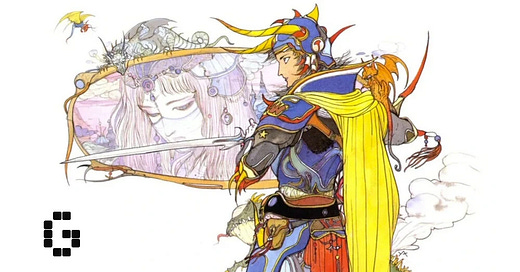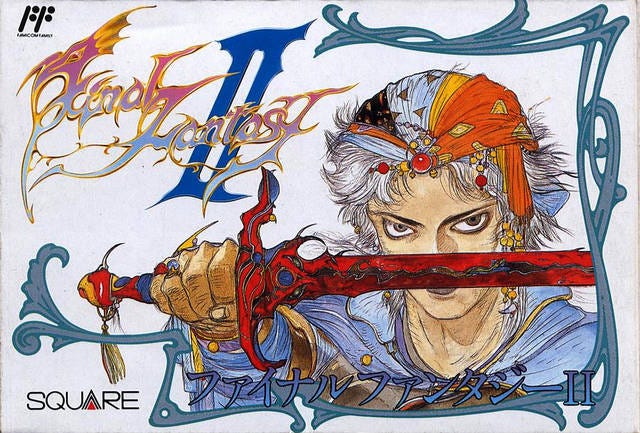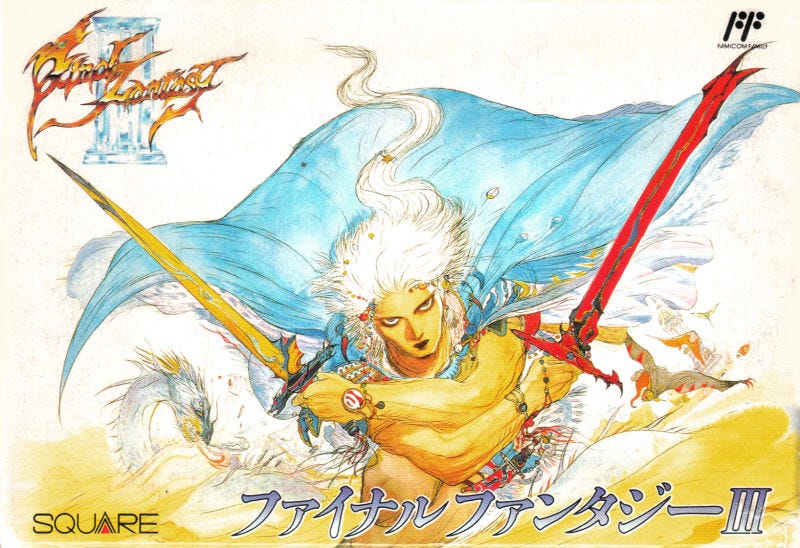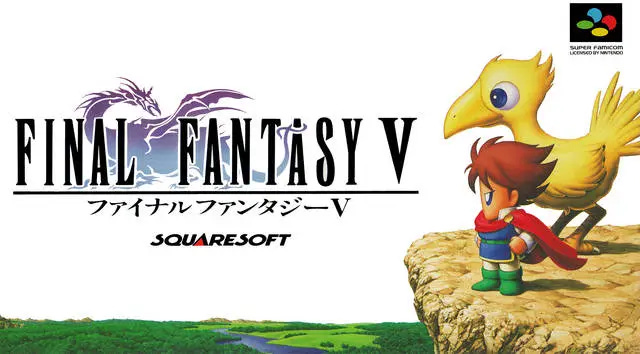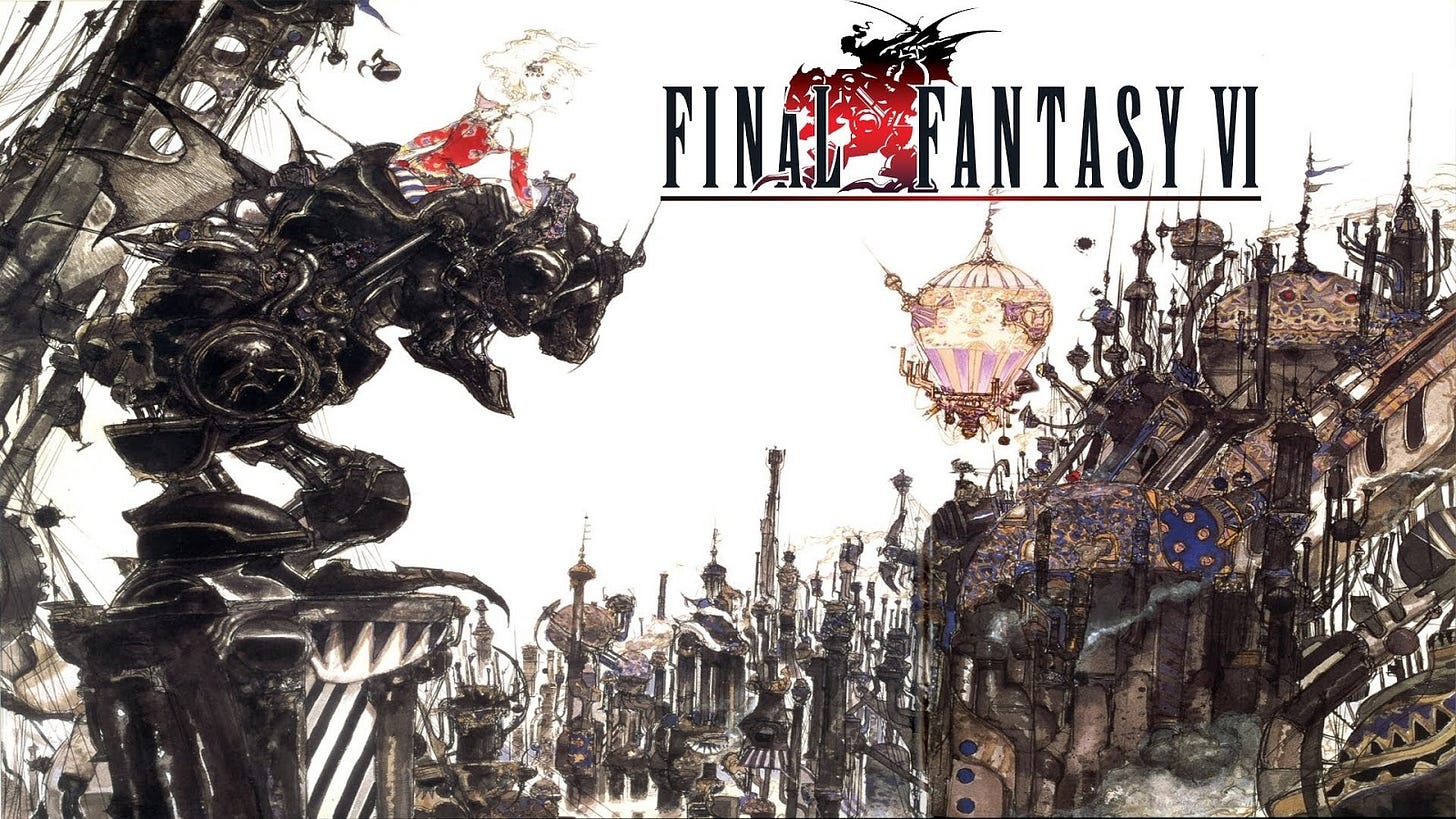GamerBraves Newsletter Vol. 89 - A Guide To Classic Final Fantasy For The Pixel Remaster
Final Fantasy is a series with a long and winding history. It’s come a long way from the small NES game that saved Squaresoft from bankruptcy by copying Dragon Quest.
Not only are Final Fantasy XVI and Final Fantasy VII Rebirth on the way, but Square Enix is bringing the Final Fantasy Pixel Remaster collection of the first six games in the series to PlayStation and Switch.
While it’s easy to write these games off as relics of the past, each of them added innovative new ideas that would shape not only the franchise but the RPG genre as a whole. So lets take a look at them:
Final Fantasy I
Released in 1987, Final Fantasy I for the Famicom (NES) sees you take control of four self-insert Warriors of Light, each chosen by one of the four elemental crystals to save the land. They start with simple tasks like rescuing Princess Sarah from the dark knight Garland but eventually, end up breaking a destructive time loop created by the entity known as Chaos. Final Fantasy I’s the biggest contribution to RPGs was, well, this image right here:
The game was one of the first RPGs to pioneer the “four dudes in a line” style of turn-based RPGs. In an age where Dragon Quest and Wizadry still had first-person battles, the ability to see your characters actually go up to the enemies and hit them was considered groundbreaking.
Aside from that the game also brought about a number of staples to the series. The iconic Crystal Prelude Song, Final Fantasy's main theme as well as the designs of the Black and White Mage classes. It’s also the game that introduced Bahamut to Final Fantasy (albeit as an NPC), plucking him as well as beings like Lich and Tiamat straight out of D&D. Overall FF1 took a lot from D&D in terms of gameplay and design but very much made it their own, starting a legacy that continues to this day.
Final Fantasy II
Final Fantasy II came out one year after the first game and definitely feels a little on the rushed side. FFII is often considered the worst game in the series due to its awkward battle system where instead of leveling up, each stat would rise based on how much you used a corresponding attack. Since your max health grew as you took more damage, there’s been many a joke about how you have to “beat yourself up” in the game to get stronger.
With that said FFII was still an important game. A pattern you soon realize with the 2D Final Fantasy is that the odd-numbered titles innovated on gameplay while the even-numbered games innovated on the story and that started with II.
This is the first FF to give us a named protagonist with a set history in Firion (the guy holding the sword in front of his face on the cover art). He and his friends have their village burnt down by the evil Palamecian Empire and must join the resistance to stop them.
It’s an interesting and darker premise for an 8-bit RPG even if it was mostly just there to contextualize the gameplay. That being said, considering how often FF makes use of the evil empire plotline (you’ll see it a couple more times in this article), it was certainly the start of something big. FFII also marks the first appearance of Cid and the faithful steed animals the Chocobo, who look absolutely terrifying in their original Yoshitaka Amano art.
Final Fantasy III
Final Fantasy III once again sets you in the role of four self-insert Warriors of Light (although this time your characters are explicitly children), prophesized to save the world from evil.
FFIII didn’t do much in terms of story but it made a major step in terms of gameplay by creating the job system. While FF1 let you choose between six classes for your party at the start of the game, III let you choose between 23 jobs which can swap between on the fly. This creates an incredible amount of replay value and customization for the player to shape their characters.
This is also the game that introduced the adorable Moogles and the ever popular summons: mythical beings from across the world can be brought to battle for a powerful attack. In FIII summons can be used by the Evoker, Summoner, and Sage classes with the original lineup consisting of now classic recurring figures: Chocobo, Shiva, Ramuh, Ifrit, Titan, Odin, Leviathan, and finally Bahamut.
Final Fantasy IV
In 1991, Square brought Final Fantasy to the 16-bit era with FFIV on the Super Famicom (SNES). FFIV swings back to story innovation, creating unique cast of named characters with set personalities and relationships with each other, not to mention, a unique class and skills in battle. The most notable of these is the main protagonist Cecil Harvey who more or less has the first major character arc in the series.
Cecil starts the game as the general of an evil empire, leading his forces to attack innocent neighboring countries for their crystals. The player is shown he has conflicted feelings of guilt over essentially committing genocide and is demoted for questioning the king over it.
Soon enough he defects from the empire and joins a resistance movement, symbolized by his class changing from a Dark Knight to a Paladin. Granted his character development sort of fizzles out a little after this change but still, for the time it was a big deal. There’s a more general emphasis on dramatic twists and reveals throughout four that while generic by today’s standard, once again acted as a stepping stone for the deeper stories the series is known for.
FFIV did however have some major gameplay innovation of its own with the Active-time battle (ATB) system. This was an attempt to make a more actionized turn based combat where instead of just selecting your turn, you have to wait for a meter fill up. This causes certain moves and characters from both your party and the enemy to take more time to execute an attack, giving a new layer of strategy to be aware of. It’s also the first game in the series to have a traditional Final Fantasy logo, something each new game in the franchise would have going forward.
Finally, we should also note that FFIV was originally released in North America as “Final Fantasy II”. This is because the real FFII and FFIII never made it outside of Japan simply because FFI got localized so late. The first Final Fantasy only came out in America after III was released in Japan and by that time the SNES would soon be launching. As such, they figured they’d just skip to IV. It’s also worth mentoning no mainline Final Fantasy game was released in Europe until FFVII launched a decade after the series began.
Final Fantasy V
Final Fantasy V is yet another game that skipped the US. While there’s no concrete reason why, it’s believed it was due to the game being “too difficult” for American audiences to handle. I wouldn’t say V is that hard but rather is far more complex than previous entries. FFV brought back the job system and realised its untapped potential. You can now combine an ability you learn from one job with another leading to all sorts of cool combos to use in battle. Many modern games like Bravely Default or Octopath Traveler were heavily inspired by FFV’s job system even decades later.
In terms of plot, V stars Barzt (or Butz in the Japanese version) a traveler who along with his newly met companions are the prophesized Warriors of Light who must protect the elemental crystals holding back an ancient demon tree. It’s back to basics but V actually has some solid writing, fully embracing its lighthearted tone with a lot of comedy between the cast. It’s pretty unique as this will be the last time Final Fantasy really does a classic “fun adventure to kill the demon lord” plot. It also helps that Barzt’s party consists mainly of cute girls and one old man who’s an absolute lad.
We also can’t talk about FFV without mentioning Gilgamesh. This was his first game, the only one where he’s a main character and it (sort of) explains how he ended up traveling through the multiverse into other Final Fantasy games. To think, he’s still searching for a way back home to fight Bartz all these years later.
Final Fantasy VI
If there’s any game on this list you probably recognise, it’s Final Fantasy VI (aka FFIII for its original American release). It’s often thought of not only as one of the best games in the series but one of the best video games of all time and for good reason. While FFII and FFIV played with the idea of deeper narratives, FFVI is the game that truly took Final Fantasy from a fantasy adventure game to full-on interactive fantasy epic.
The plot is again about an evil empire but the concept is so much more fleshed out with a greater emphasis on backstory and character development. Following the War of The Magi a thousand years ago, an industrial revolution evolved with steampunk technology replacing mystical power until the evil Gestahlian Empire found a way to bring it back by enaslaving one girl that can seemingly still use magic. Following an accident at the Mines of Narshe, that girl, Terra, is freed from the mind controlling slave crown and decides to join the resistance, even she doesn’t really have a motive to fight.
While gameplay in VI hasn’t changed too much from IV, the game presents an expansive cast of 14 playable characters (11 main and 3 optional) all of whom undergo a greater amount of character exploration, each having seen tragedy at the hands of the empire. It’s the first game in the series to have scenes specifically for the cast to express their emotions and implement deeper overarching themes of loss, trauma and finding hope in the midst of destruction. This is all capped off by one of the best scores in the series, including a 17-minute prog rock ballad for the final boss theme against a purple clown god.
I’ll end by saying that FFVI feels like the culmination of everything Square learned from the first five games and would serve as a template for the series gameplay-narrative integration going forward. All of elaborate stories and characters we’ve seen from not just in future FF games but arguably many modern JRPGs as a whole owe something to FFVI.
Final Fantasy
Final Fantasy’s importance in the RPG genre and gaming as a whole cannot understated. Not all of these games hold up the best by today’s standards but I’m glad Square Enix has gone through the effort of making them more assecible to modern audiences with the Pixel Remasters.
A lot of this innovation comes down to Final Fantasy’s willingness to change and try new things, seeing each new entry as a brand new series in its own right. The result is an anthology of games, each of which have features that served as some of the fundamental building blocks for the RPG genre and should be remembered for what they accomplished.
Feature written by Alex Daud Briggs
Will the dark hour return once again?
Diary of a Wimpy Forest Ranger
How did you find this issue of The GamerBraves Newsletter? Leave your comments below or let us know your feedback privately.
Want more GamerBraves content? Simply follow these links:
